
Surrealist automatism is a method of art-making in which the artist suppresses conscious control over the making process, allowing the unconscious mind to have great sway. This drawing technique was popularized in the early 1920s, by Andre Masson and Hans Arp.

Spiritualism is a social religious movement popular in the nineteenth and early twentieth centuries, according to which an individual's awareness persists after death and may be contacted by the living. The afterlife, or the "spirit world", is seen by spiritualists not as a static place, but as one in which spirits continue to interact and evolve. These two beliefs—that contact with spirits is possible, and that spirits are more advanced than humans—lead spiritualists to the belief that spirits are capable of advising the living on moral and ethical issues and the nature of God. Some spiritualists follow "spirit guides"—specific spirits relied upon for spiritual direction.
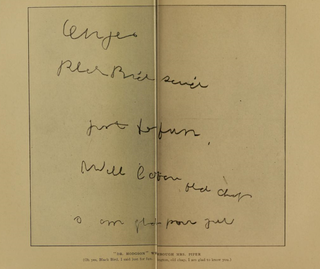
Automatic writing, also called psychography, is a claimed psychic ability allowing a person to produce written words without consciously writing. Practitioners engage in automatic writing by holding a writing instrument and allowing alleged spirits to manipulate the practitioner's hand. The instrument may be a standard writing instrument, or it may be one specially designed for automatic writing, such as a planchette or a ouija board.

A séance or seance is an attempt to communicate with spirits. The word séance comes from the French word for "session", from the Old French seoir, "to sit". In French, the word's meaning is quite general and mundane: one may, for example, speak of "une séance de cinéma". In English, however, the word came to be used specifically for a meeting of people who are gathered to receive messages from ghosts or to listen to a spirit medium discourse with or relay messages from spirits. In modern English usage, participants need not be seated while engaged in a séance.
A spiritualist church is a church affiliated with the informal spiritualist movement which began in the United States in the 1840s. Spiritualist churches exist around the world, but are most common in English-speaking countries, while in Latin America, Central America, Caribbean and Sub-Saharan Africa, where a form of spiritualism called spiritism is more popular, meetings are held in spiritist centres, most of which are non-profit organizations rather than ecclesiastical bodies.

Mediumship is the pseudoscientific practice of purportedly mediating communication between familiar spirits or spirits of the dead and living human beings. Practitioners are known as "mediums" or "spirit mediums". There are different types of mediumship or spirit channelling, including séance tables, trance, and ouija. The practice is associated with spiritualism and spiritism. A similar New Age practice is known as channeling.
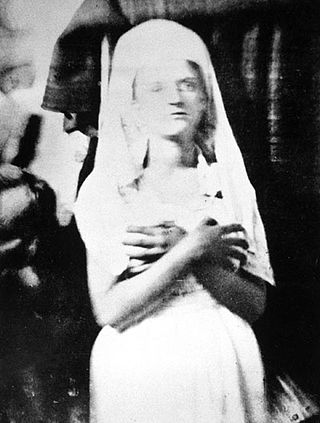
Katie King was the name given by Spiritualists in the 1870s to what they believed to be a materialized spirit. The question of whether the spirit was real or a fraud was a notable public controversy of the mid-1870s.

Florence Eliza Cook was a medium who claimed to materialise a spirit, "Katie King". The question of whether the spirit was real or a fraud was a notable public controversy of the mid-1870s. Her abilities were endorsed by Sir William Crookes but many observers were skeptical of Crookes's investigations, both at the time and subsequently.
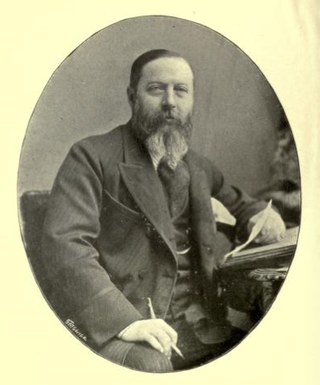
William Stainton Moses was an English cleric and spiritualist medium. He promoted spirit photography and automatic writing, and co-founded what became the College of Psychic Studies. He resisted scientific examination of his claims, which have generally been demolished.
Spiritualism is a metaphysical belief that the world is made up of at least two fundamental substances, matter and spirit. This very broad metaphysical distinction is further developed into many and various forms by the inclusion of details about what spiritual entities exist such as a soul, the afterlife, spirits of the dead, deities and mediums; as well as details about the nature of the relationship between spirit and matter. It may also refer to the philosophy, doctrine, or religion pertaining to a spiritual aspect of existence.
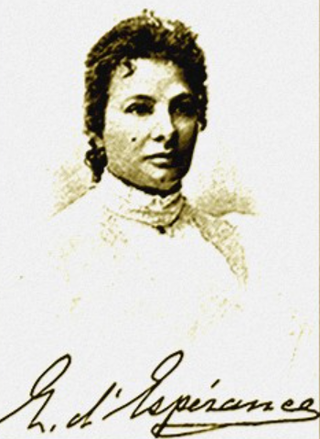
Mme. d'Esperance was an English spiritualist medium who was exposed as a fraud.
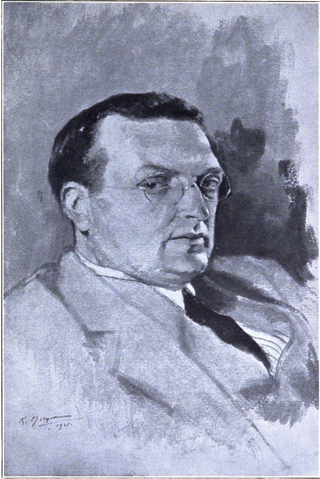
James Hewat McKenzie (1869–1929) was a British parapsychologist, and the founder of the British College of Psychic Science. McKenzie was born in Edinburgh, Scotland, on 11 November 1869 and died on 29 August 1929, in London.
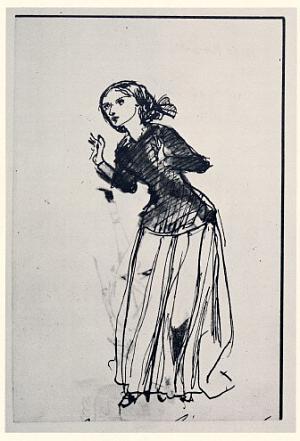
Anna Mary Howitt, Mrs Watts was an English Pre-Raphaelite painter, writer, feminist and spiritualist. Following a health crisis in 1856, she ceased exhibiting professionally and became a pioneering drawing medium. It is likely the term "automatic drawing" originated with her.

Gladys Osborne Leonard was a British trance medium, renowned for her work with the Society for Psychical Research. Although psychical researchers such as Oliver Lodge were convinced she had communicated with spirits, skeptical researchers were convinced that Leonard's trance control was a case of dissociative identity disorder.

Jack Webber (1907–1940) was a Welsh spiritualist medium.
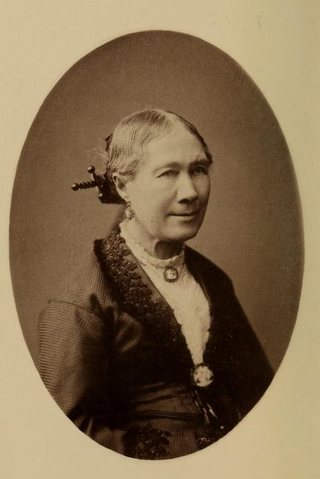
Georgiana Houghton (1814–1884) was a British artist and spiritualist medium.

George Wyld (1821–1906) was a Scottish homeopathic physician and Christian Theosophist.
Anna Maria Augusta Cassel was a Swedish artist. She mainly painted landscapes from Norrland, Skåne, Västmanland and around Stockholm, made in oil or in tempera.
Sigrid Elisabeth Hedman, maiden name Norman, was one of the members of the group De Fem, a spiritualist group founded in 1896 and dissolved in 1907.
Emma 'Mathilda' Nilsson, née Cederberg was a Swedish spiritualist from Stockholm.
















